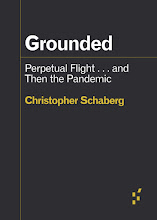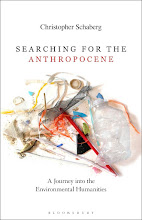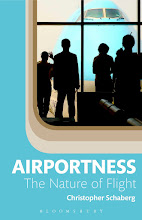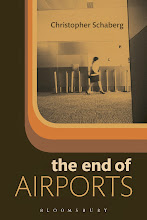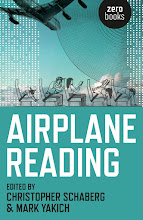Hygiene Class starts with Hygiene Air...
I had a good chat with travel writer Andrew Nelson about the future of flight, for a listicle he did for the Wall Street Journal. I have a bit in the piece, but here's the longer back & forth...
Andrew:
I'm wondering if you have a take on how we will feel about air travel, what it might mean to us to fly and how or what we might take with us on a flight that will be new, changed and maybe what might be the same? Will there be a "safe" class of travel with extra hygienic flourishes as opposed to just business or economy? I encourage you to be speculative.
Me:
Four ideas to start with.
1) Fragility. To me one of the most profound things that has happened over the past six months is that travelers have been confronted with the baseline fragility of flight: something as tiny as a virus can set off a ripple effect that can ground flights around the world. The coronavirus has ruptured public confidence in the assumed ease and accessibility of air travel. In the 15 years or so since 9/11, there was a sort of unshakable confidence in the constant growth and lowered costs of commercial flight. Now, other factors in addition to public heath crises—increasingly erratic weather patterns linked to anthropogenic climate change; economic turmoil; geopolitical events—are more acutely positioned to quickly disrupt air travel on a mass scale (should it return at all).
2) Stress & fear. As airlines attempt to refill planes, the stresses of flying will reach a fever pitch—counterproductively dissuading people from flying. The safety protocols in the wake of COVID-19 will make the post-9/11 security checkpoint seem quaint. Likewise, public health awareness and cleanliness (or the lack thereof) on airplanes will rapidly erode the relatively laissez-faire experience of personal space that travelers had become used to. (For so long it was about my armrest, my setback tray table, my leg room, my miles & points, etc.) Whereas air travel was seen since the Golden Age of flight as luxurious and something of a goal for ordinary people (if not part of their workaday lives), it may well become something that people avoid, and are even afraid of—because of perceived risk factors in addition to the increased stressors of flying.
3) Inequalities. Wealth gaps within the airport and on the airplane will potentially be exacerbated. As you suggest, we could see grimier parts of the airport/airplane—where economy class travelers exist—and then cleaner parts where First Class and Business Class travelers exist. In a way this division had been happening gradually for a long time, but with fears and risks of infection and contagion, such divisions could be pronounced. (And if this sounds like something out of a Black Mirror episode, it should!)
4) Cuts. Airlines are going to cut way back. I just heard this morning that 1800 experienced Delta pilots recently took a buy-out package. (And I’m quite sure that 1800 new Delta pilots are not being hired and trained, at the moment.) Major airlines will shrink and there will quite probably be mergers and absorptions. Aircraft manufacturing will also contract. Airlines and aircraft and jet engine manufacturers had for years projected multiple decades of steady growth; the current jolt will likely have a decades-long negative impact on these industries. Everyday travelers, such as they still exist, will feel these contractions in multiple small and big ways, from the eliminations of flights to certain airports, to fewer newer planes, to a decrease in amenities on board.
Andrew:
Let's tease this out even more.
- "Hygienic Class"—will people pay extra for a new class of seat and seating area with extra high filtration ventilation restricted to their part of the plane? Or will we see extra-hygienic flights—planes with fewer people but costing more, removing the middle row permanently or putting everyone in their own filtered pod, like a sleeper car on an old train?
- Will there be nostalgia expressed for the "golden days" of flying? Perhaps hit movies or sentimental songs about this era when anyone could get up, go and fly without fear? Could we see a spate of longing, cultural manifestations in song, Netflix streamers, movies? If so, what brand might be the Pan Am of our recently lost age? Virgin? Jet Blue?—certainly not United or American ... hah. Play casting director. Who might star in a 2026 Rom Com about air travel circa 2016?
- Because hub and spoke exposes us to more hassle will we opt for more direct flights?
- Will refurbished planes (because so many orders are cancelled) be the wave of the future—what could that design look like?
Me:
- Would-be passengers will definitely pay extra for the illusion of hygiene and safety—and airlines and airports are already supplying these illusions (as well as the real thing, of course). But the question is what will happen as people become less trusting and more suspicious of things like high filtration, extra cleaning measures, etc. I think the reality is that people’s safe ‘pods’ are going to be what’s at home. As long as pandemics are on people’s minds, anything seen as a germ-sponge is going to be suspect—no matter how much the image is cleansed, no matter the new technologies touted. Regardless of the level of filtration and the cleanings between flights, it’s really hard to glorify the crammed long metal tube with wings, these days.
- There will probably be some nostalgia for the Golden Age of flight. But there may also be a sense of “How were we that stupid to think we could do that, on such a scale?!?” And it’s from such a latter sense that we might learn something, and work toward better modes of mass transit and global migration. I think actually the brand we might long for the most is Southwest: that airline was simultaneously the nadir of commercial flight (for sneering elite fliers) and its apotheosis, as the world’s largest low-cost carrier. But Southwest's convivial ethos and cattle-car boarding procedures seem destined to the dustbin of history. Southwest will no doubt survive the current downturn (it has, in many ways, the smartest business model, with its sole 737s and low-fare logic), but I don’t think it will ever be the same. The imaginary movie you’re suggesting makes me think of that 2004 film The View from the Top, staring Gwyneth Paltrow—the first post-9/11 film to jovially revisit commercial flight, and really fascinating for the ways it did so. What will the comparable film be for us, in a few years, reflecting on the last several years of flight? Actually, what if we imagined this to be a Pixar airport-themed film, for the Covid-generation kids who never got to know commercial flight, or only remember it vaguely, and for their parents who remember it with a hint of nostalgia such as you mentioned above? That would be an interesting movie idea to play out, six years from now…
- Yes, smaller airports are going to be under pressure with fewer flights, and people will likely start driving to destinations from major airports, again. The real scrum is going to involve what smaller airports survive, and how. Just look at the new New Orleans airport to see this crisis playing out in real time: after several months of boom, a massive drop in flights with no big boom back on the horizon anytime soon. Nola.com reported just a couple days ago on the airport having to slash jobs at the new airport. Southwest is cutting flights from MSY. This situation will play out at other small to mid-size airports that were banking on growth—only to be looking down the barrel of the pandemic, now.
- This is a really interesting question. Especially to think about with regard to the many many grounded Boeing 737 MAX planes—brand new, but still with a very questionable future! What could be done with them, if they never fly? Refurbished planes will almost certainly be used more and more. In fact, while I don’t have data to back this up yet, I’ll bet that the airplane scrap yards (like in Arizona) where commercial airliners are stored are going to see an uptick in business as airlines try to scrounge to keep fleets alive while spending minimally. (This may not sound very comforting to aspiring fliers!) Aircraft interiors can be spruced up so that planes appear ‘new’ from the inside—but the airliners themselves might be fairly old. In some ways the 88 Boeing 717s—converted from Air Tran (after being absorbed by Southwest) to Delta in 2013—show how this might work, especially as mergers happen in the coming years.








